The Indian automotive market is witnessing a heated competition between two premium hatchbacks, the Tata Altroz and the Maruti Baleno. With the recent launch of the 2025 Tata Altroz, featuring an AMT option, the rivalry has intensified.
The Maruti Baleno price starts at Rs 6.70 Lakh ex-showroom for Sigma (Petrol), while the Tata Altroz price begins at Rs 6.89 Lakh ex-showroom for Smart (Petrol). This comparison will delve into the key differences between these two popular hatchbacks, examining their price points, engine performance, and feature offerings.
Key Takeaways
- Comparison of price points and features of Tata Altroz and Maruti Baleno.
- Analysis of engine performance and fuel efficiency.
- Examination of design elements and brand reputation.
- Insights into which hatchback offers better value proposition.
- Objective comparison to help potential buyers make an informed decision.
New Tata Altroz Vs Maruti Baleno: An Overview
The premium hatchback segment is witnessing a fierce competition between the Tata Altroz and Maruti Baleno. The 2025 Tata Altroz facelift has brought significant updates, featuring refreshed styling and new feature additions.
The Maruti Baleno has established itself as a segment leader with its reliability, fuel efficiency, and feature-rich packages. Both vehicles compete in the premium hatchback segment, offering spacious interiors and modern features.
The Tata Altroz is built on Tata’s ALFA architecture, while the Baleno utilizes Maruti’s Heartect platform, resulting in different driving characteristics. The 2025 Tata Altroz is positioned as a safety-focused alternative with premium features.
Price Comparison: Which Offers Better Value?
To determine which hatchback offers better value, we need to examine their prices. TheMaruti Balenostarts at Rs. 6.70 Lakh (ex-showroom) for the Sigma variant, while theTata Altrozbegins at Rs. 6.89 Lakh (ex-showroom) for the Smart variant.
When comparing on-road prices, the difference becomes more apparent. The Baleno costs approximately Rs. 7.89 Lakh, whereas the Altroz is priced at around Rs. 8.13 Lakh.
Here’s a detailed price comparison table:
| Model | Ex-Showroom Price (Lakh) | On-Road Price (Lakh) |
|---|---|---|
| Maruti Baleno (Sigma) | 6.70 | 7.89 |
| Tata Altroz (Smart) | 6.89 | 8.13 |
The2025 Tata Altrozlineup extends to Rs. 11.29 Lakh for top variants, while the Baleno range tops out at Rs. 9.92 Lakh. This indicates a wider price spectrum for the Tata offering. The value proposition differs between the two, with the Baleno offering better cost efficiency at lower variants and the Altroz providing more premium features at higher price points.

Both manufacturers offer various financial schemes and exchange bonuses that can affect the final price. When factoring in maintenance costs, resale value, and feature-to-price ratio, the value comparison becomes more nuanced.
Engine and Performance: Power Delivery Face-Off
Engine performance is a vital consideration in the Tata Altroz and Maruti Baleno comparison, with both vehicles offering unique benefits. The Tata Altroz is powered by a 1.2-liter petrol engine producing 87bhp and 115Nm of torque, while the Maruti Baleno boasts a similarly sized 1.2-liter petrol engine that delivers 88bhp and 113Nm of torque.
Both hatchbacks feature comparable 1.2-liter petrol engines, with the Maruti Baleno producing slightly more power at 88bhp compared to the Tata Altroz’s 87bhp. However, the Altroz has a slight edge in terms of torque, delivering 115Nm compared to the Baleno’s 113Nm. The key difference lies in their torque delivery characteristics, with the Altroz reaching its peak torque at 3250rpm, potentially giving it better low-end response compared to the Baleno, which reaches its peak torque at 4400rpm.
Transmission options for both vehicles include a standard 5-speed manual gearbox, with both manufacturers now offering AMT (Automated Manual Transmission) options for added convenience. Notably, the Altroz is also available with a 1.5L diesel engine option, producing 90PS and 200Nm, which is not offered in the Baleno, providing an advantage for high-mileage drivers.
- The Tata Altroz and Maruti Baleno have comparable engine specifications, but differ in torque delivery and transmission options.
- The Altroz’s diesel engine option is a significant differentiator, offering more power and torque for those who need it.
- In terms of real-world performance, the Baleno feels slightly more refined with smoother power delivery.
- The Altroz, on the other hand, offers a more solid driving feel with better stability at higher speeds.
While the Baleno generally performs better in terms of engine noise insulation and vibration control, contributing to a more comfortable driving experience, the Altroz’s performance capabilities make it a strong contender in its class. Ultimately, the choice between the two will depend on individual priorities regarding engine performance and driving experience.
Fuel Efficiency: Mileage Matters
The Maruti Baleno outperforms the Tata Altroz in terms of fuel efficiency, making it a more economical choice for buyers. According to ARAI reports, the Maruti Suzuki Baleno has a mileage of 22.4-30.6 kmpl.
The Baleno’s petrol variant demonstrates superior fuel efficiency with an ARAI-certified mileage of 22.35 kmpl, extending up to 30.61 kmpl for the CNG version. In contrast, the Tata Altroz’s petrol variant offers competitive but slightly lower fuel efficiency.
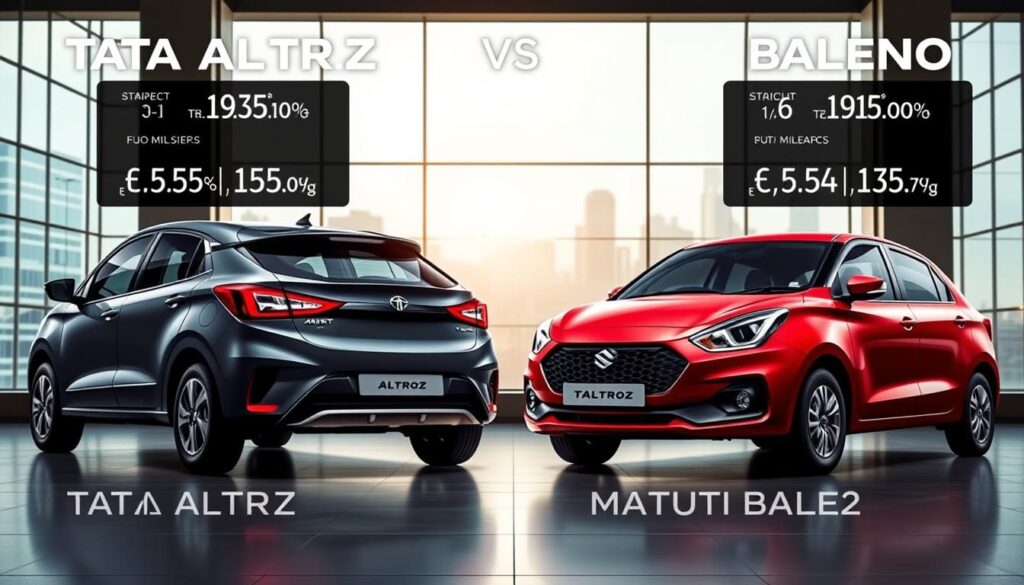
Real-world driving conditions show that the Baleno achieves approximately 16.5 kmpl in city driving and around 21 kmpl on highways. The Baleno’s better mileage can be attributed to its lighter weight and Suzuki’s refined engine technology.
“For budget-conscious buyers, the difference in fuel efficiency could translate to significant savings over the vehicle’s lifetime.” Both vehicles feature idle start/stop technology to improve fuel efficiency in stop-and-go traffic conditions.
- The Maruti Baleno offers superior fuel efficiency.
- Tata Altroz’s petrol variant has slightly lower fuel efficiency.
- The Baleno’s lighter weight contributes to its better mileage.
Transmission Options: Manual vs Automatic
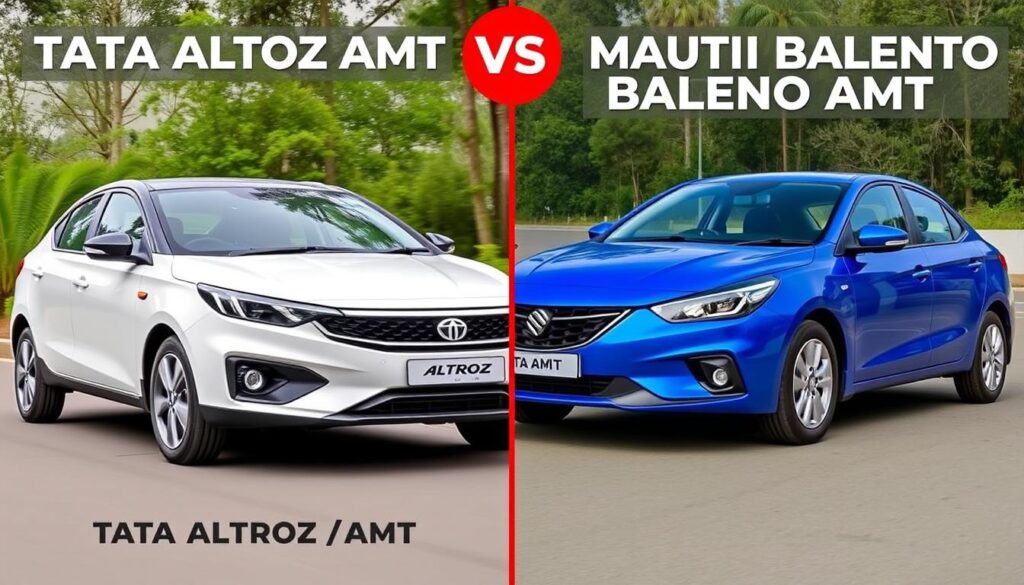
Both the Tata Altroz and Maruti Baleno have introduced 5-speed AMT (Automated Manual Transmission) options, a first for the Altroz and a shift from CVT to AMT for the Baleno. The Altroz’s Creative S variant features paddle shifters, providing drivers with more control over gear shifts.
Key differences include the availability of AMT in more Baleno variants, including the top Alpha trim, whereas Tata limits it to specific variants. Both transmissions include safety features like hill hold assist and offer comparable fuel efficiency to their manual counterparts.
Exterior Design and Styling
Exterior styling is a crucial aspect of any car’s appeal, with the Tata Altroz and Maruti Baleno offering unique takes on modern hatchback design.
The Tata Altroz boasts a more aggressive and contemporary design language, characterized by sharp character lines, while the Maruti Baleno adopts a smoother, more conservative approach to exterior styling. Both hatchbacks feature LED tail lights that enhance rear visibility and add a premium touch to their overall appearance.

From a side view, the Altroz displays a distinctive rising window line and blacked-out pillars, creating a floating roof effect. In contrast, the Baleno has a more conventional profile with smoother contours.
| Feature | Tata Altroz | Maruti Baleno |
|---|---|---|
| Exterior Door Handles | Body Coloured | Black (lower variants) |
| Tail Light | LED | LED |
| Dimensions (LxWxH) | 3990x1755x1523 mm | 3990x1745x1500 mm |
In terms of size, both vehicles maintain similar dimensions, with only minor differences in width and height. The Altroz measures 3990mm in length, 1755mm in width, and 1523mm in height, compared to the Baleno’s 3990mm length, 1745mm width, and 1500mm height.
Interior Comfort and Space
The interior of the Tata Altroz and Maruti Baleno showcases distinct design philosophies, influencing comfort and space. The Altroz offers a more premium-feeling interior with better quality materials and a contemporary dashboard design.
- Both vehicles provide comfortable seating for five passengers.
- The Altroz offers slightly better rear seat comfort with more supportive cushioning.
- The Baleno features rear AC vents and wireless phone charging in higher variants.
- The Altroz counters with features like ambient lighting and a cooled glovebox.
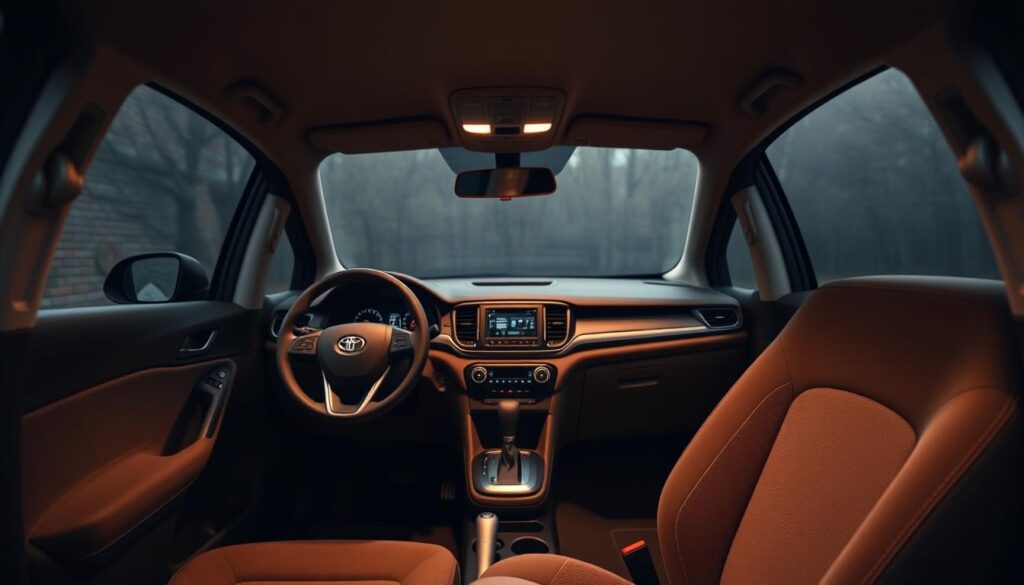
The interior space in both cars is well-utilized, with comparable headroom and legroom. However, the Altroz’s slightly taller height translates to marginally better headroom.
Dimensions and Boot Space
Understanding the dimensions and boot space can help differentiate between the Tata Altroz and Maruti Baleno.
The Tata Altroz and Maruti Baleno are closely matched in terms of overall dimensions, with both vehicles measuring 3990mm in length. However, there are some notable differences in their width and height.
| Dimension | Tata Altroz | Maruti Baleno |
|---|---|---|
| Length (mm) | 3990 | 3990 |
| Width (mm) | 1755 | 1745 |
| Height (mm) | 1523 | 1500 |
| Wheelbase (mm) | 2501 | 2520 |
| Boot Space (litres) | 345 | 318 |
The Altroz is slightly wider and taller, offering better shoulder room and headroom, especially for rear seat passengers. The Baleno has a longer wheelbase, which could translate to better legroom, though the difference is minimal in practical terms.
One significant advantage of the Altroz is its larger boot space, with 345 litres of cargo capacity compared to the Baleno’s 318 litres. Both cars feature 60:40 split folding rear seats, enhancing their utility.
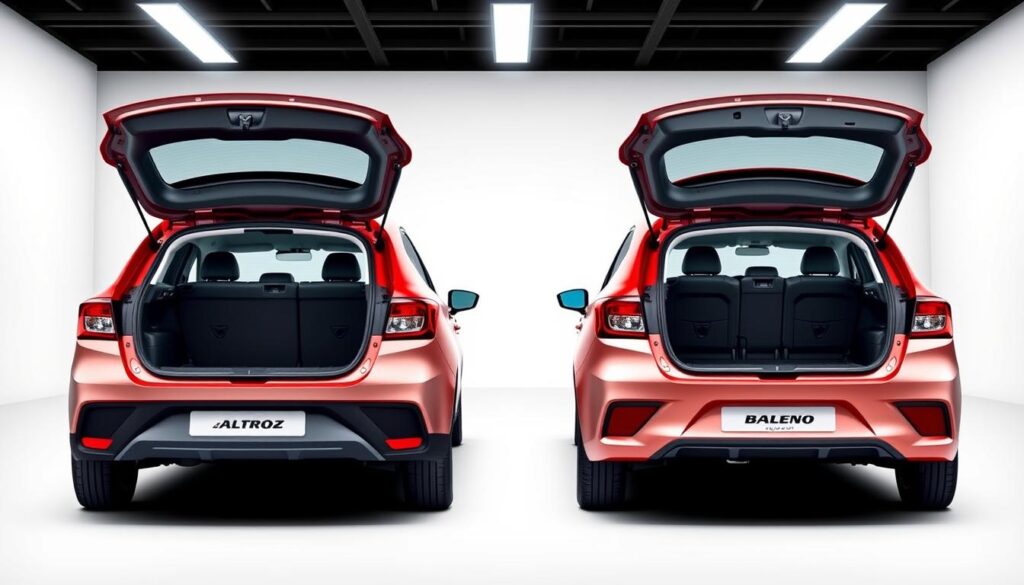
Technology and Infotainment Features
When it comes to technology and infotainment, the Tata Altroz and Maruti Baleno offer distinct features that cater to modern drivers.
The Tata Altroz boasts dual digital screens, providing a modern tech experience. In contrast, the Maruti Baleno features an analog-digital hybrid instrument panel.
Both vehicles offer a 360-degree camera system, enhancing safety during parking. The Baleno includes a heads-up display (HUD), while the Altroz features an electrically controlled sunroof and ambient lighting.
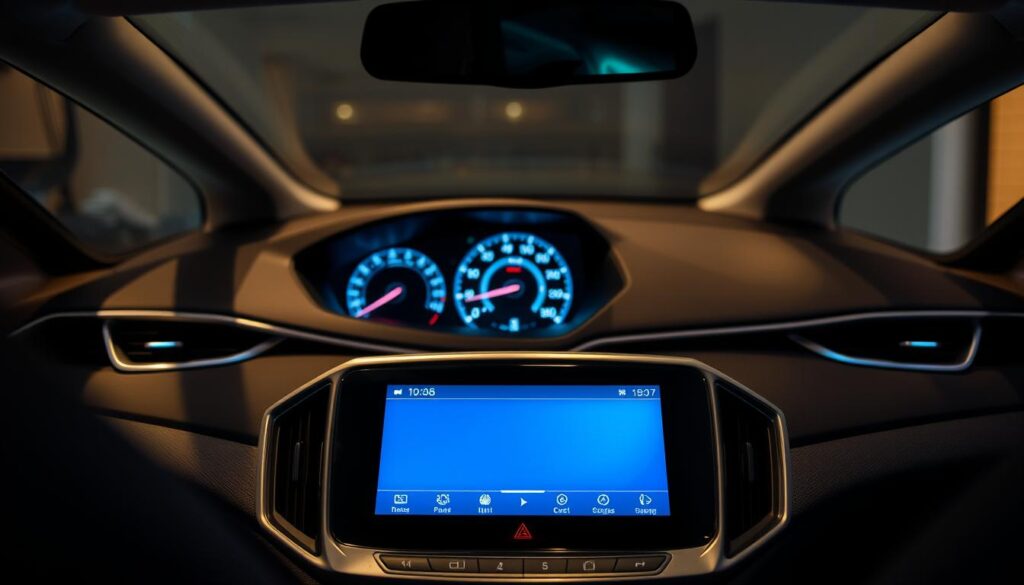
The Baleno offers wireless phone mirroring and charging, while the Altroz has paddle shifters and a cooled glovebox. Both hatchbacks come with push-button start functionality and automatic climate control, providing a comfortable driving experience with a clear view.
Safety Features and Ratings
When it comes to safety, both the Tata Altroz and Maruti Baleno offer a range of features to protect occupants. Both vehicles are equipped with six airbags, ABS with EBD, electronic stability program (ESP), and ISOFIX child seat mounting points.
The Tata Altroz has earned a 5-star Global NCAP safety rating, making it one of the safest hatchbacks in India. Although the Maruti Baleno has not undergone the same testing protocol, it still offers a robust set of safety features.
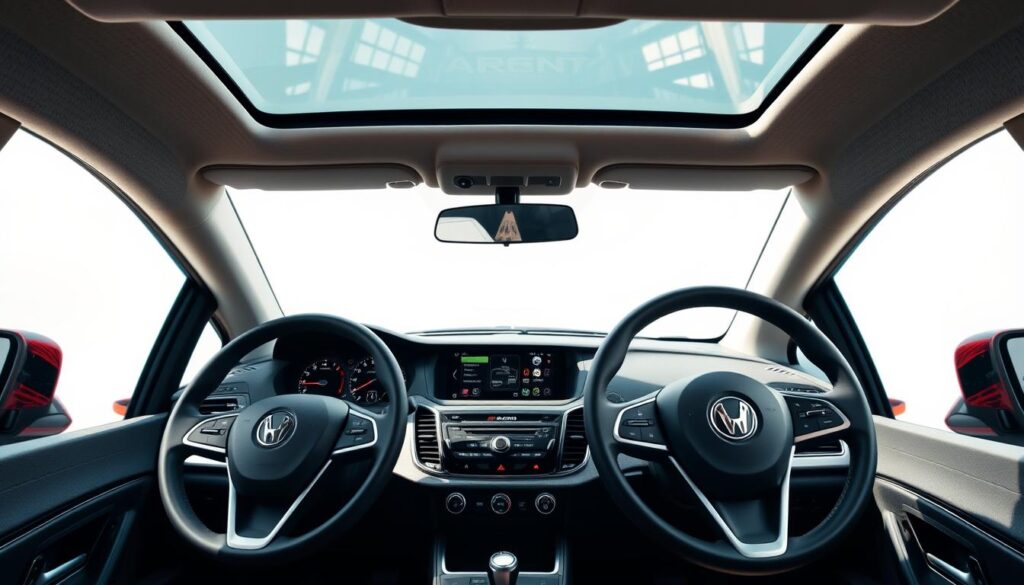
Both hatchbacks feature speed-sensing door locks that automatically engage when the vehicle exceeds certain speeds. Additionally, they include overspeed warning alerts that provide a single beep at 80 kmph and continuous beeps when exceeding 120 kmph.
- The Altroz boasts a stronger body structure with high-strength steel, potentially offering better protection in case of collisions.
- Other common safety features include rear parking sensors, seat belt reminders, and anti-theft engine immobilizers.
Overall, both vehicles prioritize safety, with the Tata Altroz having a notable edge in terms of its Global NCAP rating.
Ride Quality and Handling
The Tata Altroz and Maruti Baleno exhibit distinct characteristics in terms of ride quality and handling, influenced by their suspension systems and design.
- The Tata Altroz features an Independent MacPherson Dual Path Strut with Coil Spring at the front and a Twist Beam with Coil Spring and Shock Absorber at the rear, providing a balanced ride quality.
- In contrast, the Maruti Baleno uses a McPherson Strut front suspension and a Torsion Beam rear setup, tuned for comfort.
When driving at higher speed around 80-100 kmph, the Altroz demonstrates better stability due to its suspension tuning and heavier build.
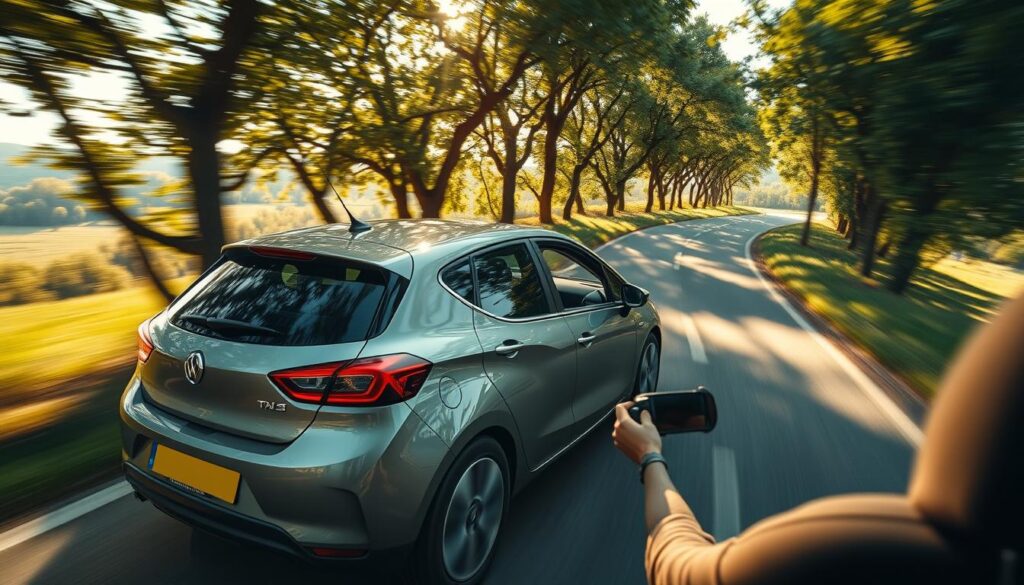
The Baleno’s lighter steering makes it easier to maneuver in city conditions, while the Altroz’s more weighted steering provides better feedback at highway speed.
Pros and Cons: Strengths and Weaknesses
To make an informed decision between the Tata Altroz and Maruti Baleno, it’s essential to weigh their advantages and disadvantages.
The 2025 Tata Altroz facelift excels in build quality and safety ratings but falls short in engine refinement. In contrast, the Maruti Baleno offers superior mileage and a more refined powertrain.
| Features | Tata Altroz | Maruti Baleno |
|---|---|---|
| Build Quality | Excellent | Good |
| Safety Ratings | 5-star | 4-star |
| Engine Refinement | Average | Good |
| Mileage | Average | Excellent |
| Price | Competitive | Budget-friendly |
The Altroz facelift provides more premium features like sunroof and dual digital screens, while the Baleno offers better after-sales service. Ultimately, the choice depends on prioritizing features, mileage, and price.
![]()
Conclusion: Which Hatchback Should You Choose?
The decision to buy either the Tata Altroz or Maruti Baleno hinges on personal priorities. If safety is your top concern, the Altroz is a compelling choice due to its 5-star safety rating. For those prioritizing fuel efficiency and lower maintenance costs, the Maruti Baleno offers better mileage and an extensive service network. As of April 2025, the Altroz scores higher in user ratings (10 vs 9.02), indicating better customer satisfaction.
Ultimately, the choice between these premium hatchbacks comes down to brand preference, specific features, and long-term ownership considerations.

